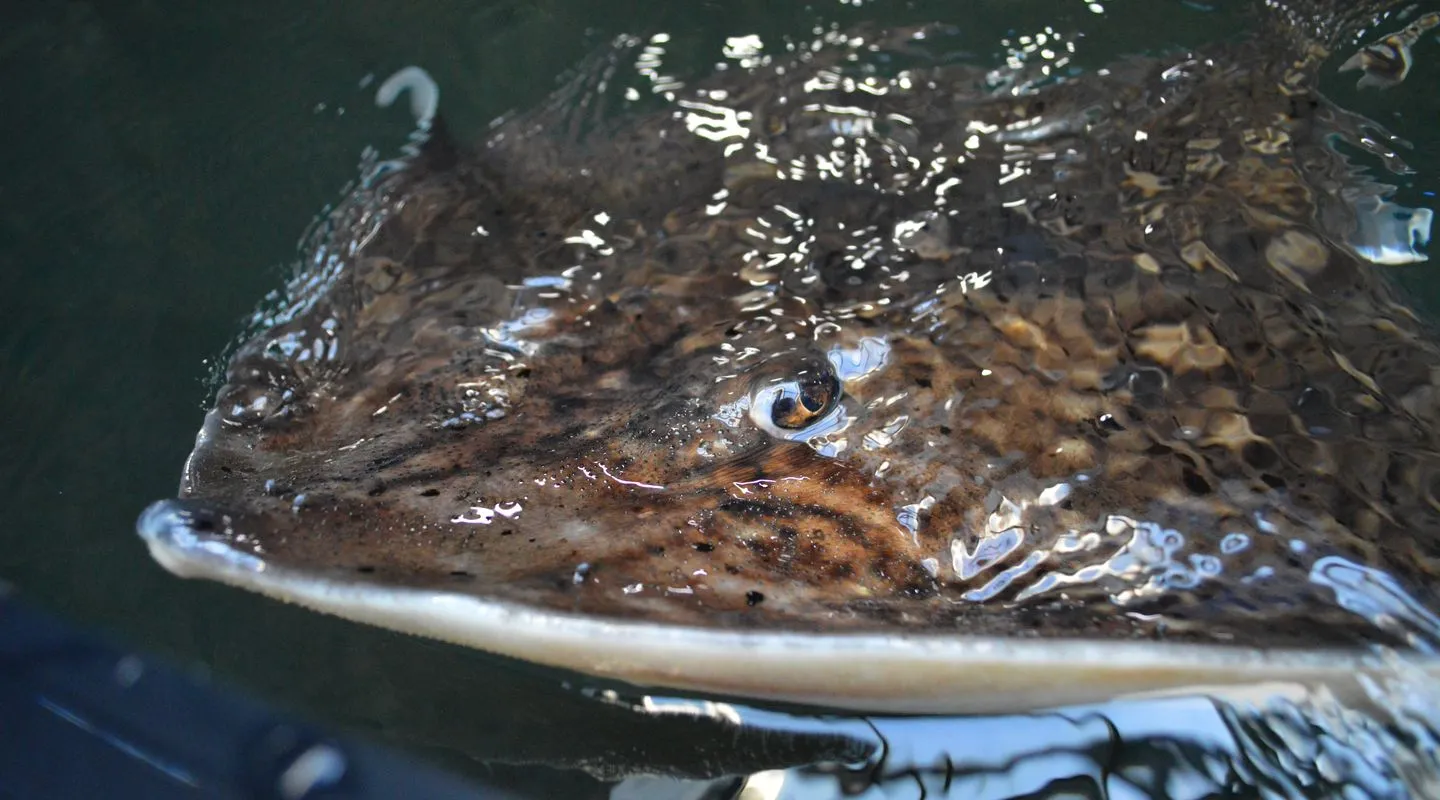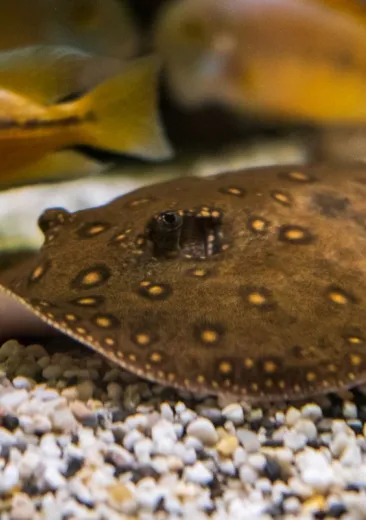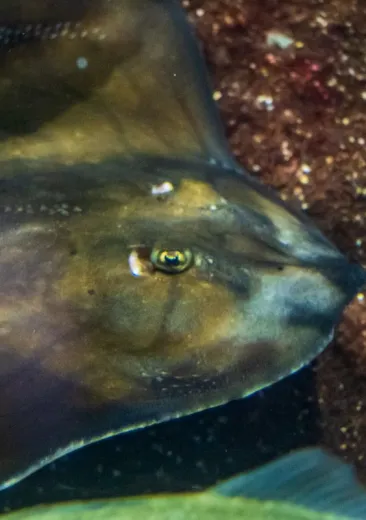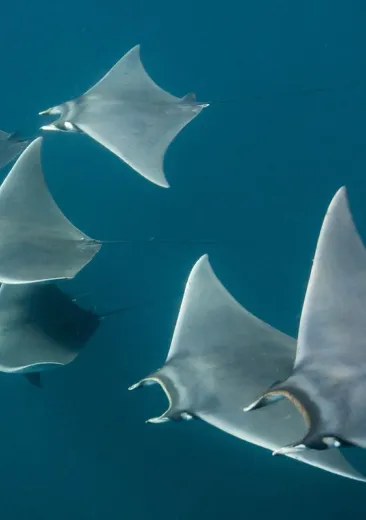It camouflages itself in the sand so that only its eyes are visible. It can be found at depths of between 20 and 300 m in almost all the seas.
Where is the animal to be found?
It is a species distributed throughout the world. It can be found in the coastal waters of northern Europe, from Iceland and Norway (south of the Arctic Circle), through to the North Sea, the Mediterranean, the western Black Sea, Madeira, the Atlantic coasts of Africa, and as far south as South Africa and the southwestern Indian Ocean.
How can it be recognised?
- It gets its name from the thorns on its dorsal side. It can grow up to 1.20 m long for females, 70 cm for males, and a width of 60 cm. It camouflages itself in the sand so that only its eyes are visible.
- It has a flat, diamond shape with large triangular pectorals.
- The skin on its back is rough. It is greyish or brown with dark and yellowish patches, and its abdomen is white.
What is distinctive about it?
A female thornback skate lays between 70 and 140 eggs each year. The eggs are rectangular and flat, about 5 cm in size, and are laid in seaweed or sand. In these eggs composed of horns, the embryos develop for 5 months. Juveniles measure between 8 and 10 cm at birth.
Empty egg shells left in the sea can often be found when strolling along the beach.
Threat and protective measure
NT-near threatened and declining. This species is protected by regulations in France. It is also regulated internationally through the OSPAR Convention and through TACs and quotas for each country in the European Union.










